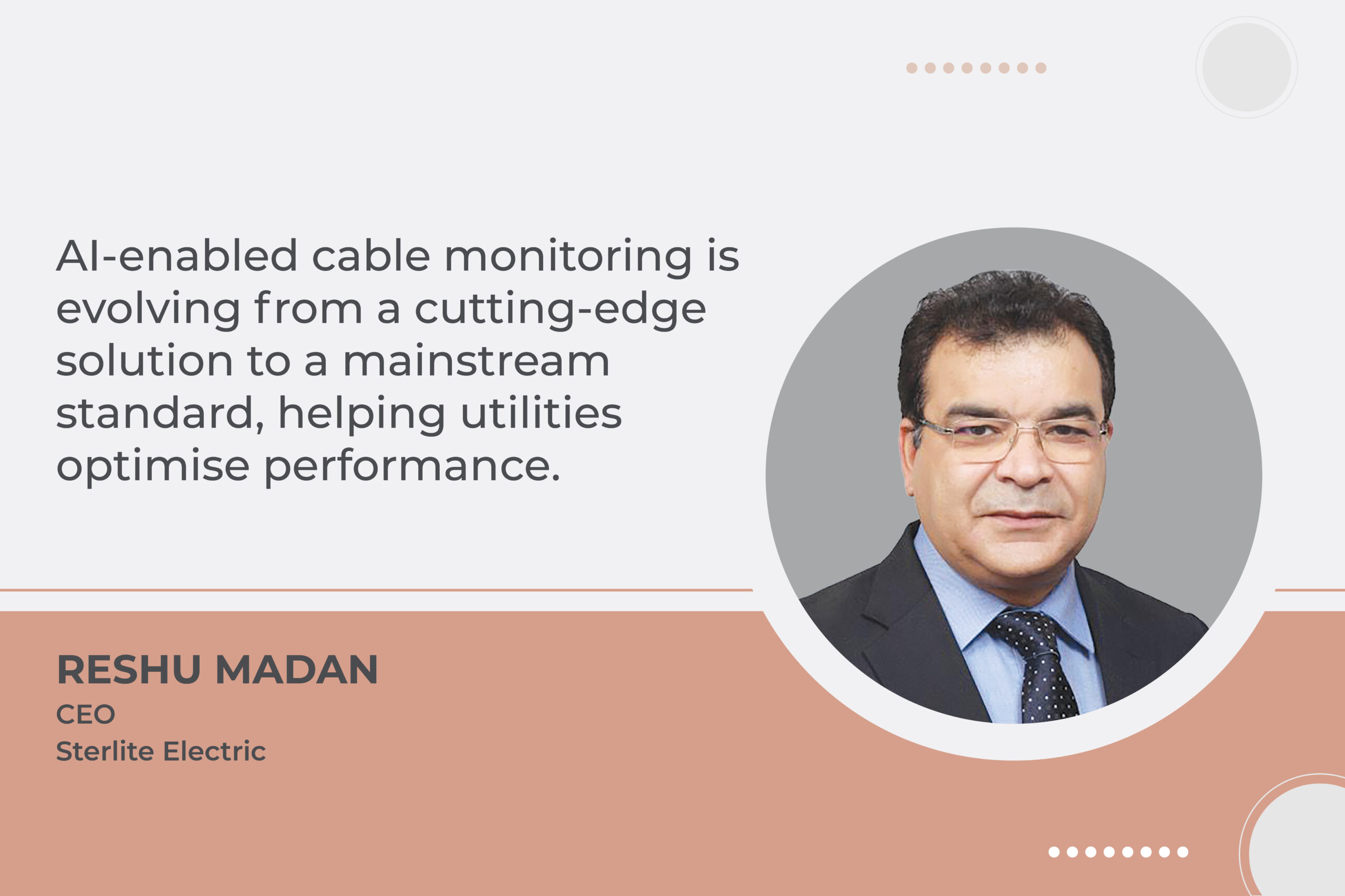Developers using electron beam tech to enhance durability in solar cables
By Staff Report September 25, 2025 4:39 pm IST
By Staff Report September 25, 2025 4:39 pm IST

AI-enabled cable monitoring is evolving from a cutting-edge solution to a mainstream standard, helping utilities optimise performance.
The Indian wires and cables sector is innovating across product development, smart grid integration, and sustainability. The sector is scaling up manufacturing to meet the demands of large-scale renewable energy integration and help India achieve its clean energy vision. AI-enabled cable monitoring is evolving from a cutting-edge solution to a mainstream standard, helping utilities optimise performance. Reshu Madan expresses his views with EPR. Let us hear him.
With India surpassing 242 GW of clean energy, how is the wires and cables industry leveraging advanced technologies and domestic manufacturing for integration?
The rapid progress in renewables has created significant opportunities for the wires and cables industry, which is emerging as a critical enabler of large-scale renewable integration. Manufacturers are developing specialised cables tailored specifically for renewable applications. For example, manufacturers are increasingly using advanced technologies like electron beam cross-linking to enhance the durability and UV resistance of solar cables, which is critical given India’s intense sunlight and long project lifespans. For wind energy, particularly offshore wind, which India is actively exploring, cables are being engineered to withstand challenging environmental conditions and high voltages, ensuring reliable power transmission.
Subsea cables are also gaining focus as India invests in offshore wind corridors along its coastline. The country is also investing heavily in High-Voltage Direct Current (HVDC) systems to enable efficient transmission of renewable power from resource-rich states like Gujarat, Tamil Nadu, and Rajasthan to demand centres across the country. Finally, the government’s push for ‘Atmanirbhar Bharat’ is driving investments into domestic manufacturing facilities for wires and cables, reducing import dependence and strengthening the supply chain to support renewable infrastructure buildout.
How is the Indian manufacturing ecosystem positioning itself to reduce import dependency for high-performance cables and accessories?
The manufacturing ecosystem is strategically positioning itself to reduce import dependency for high-performance cables and accessories by combining policy support, capacity expansion, and technological innovation.
One major shift is the growing focus on indigenisation. Under the government’s Make in India and Atmanirbhar Bharat initiatives, several Indian cable manufacturers are ramping up R&D and investing in advanced production technologies to produce high-specification cables that were previously imported locally.
To support this, the ecosystem is also expanding testing and certification infrastructure to meet global standards like IEC, UL, and IEEE. This not only helps domestic players meet the quality benchmarks expected in export markets but also reduces reliance on foreign technologies.In parallel, the government has introduced Production-Linked Incentive (PLI) schemes and policy support. These initiatives provide capital expenditure support and performance-linked rewards, encouraging manufacturers to establish or scale production of critical components such as multilayer PCBs, connectors, and specialised cable assemblies. By localising component value chains, these efforts are not only addressing import dependency but also strengthening India’s export capabilities.
Indian companies are also entering into technology collaborations and joint ventures with global players to bring niche manufacturing capabilities to India.
How will AI-enabled cable monitoring enhance reliability and efficiency in renewable-heavy transmission and distribution networks?
AI-enabled cable monitoring is poised to become a standard practice in utilities and large-scale renewable projects. As renewable energy integration grows, the complexity and scale of power transmission networks increase significantly. Traditional monitoring methods often fall short in providing real-time, predictive insights into cable health. The rapid adoption of AI across energy operations—ranging from predictive maintenance of solar assets to the development of intelligent grids has demonstrated the technology’s ability to drive efficiency, reliability, and resilience.
The evolution of AI-enabled monitoring also aligns seamlessly with broader industry trends such as digital twins, smart grids, and intelligent asset management. As renewable integration accelerates, the reliability of transmission and distribution networks will become mission-critical, and proactive cable monitoring will be a key enabler of this transition.
*******************************
We use cookies to personalize your experience. By continuing to visit this website you agree to our Terms & Conditions, Privacy Policy and Cookie Policy.